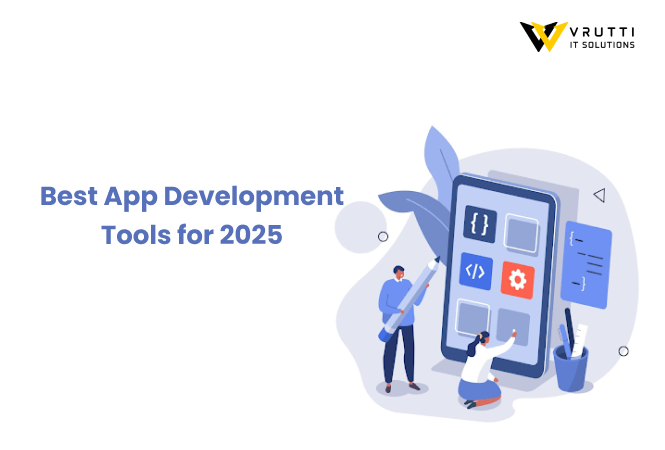Best App Development Tools for 2025

Best App Development Tools for 2025
1. Introduction
The app development industry continues to evolve rapidly, with new tools emerging to enhance efficiency, performance, and innovation. As we enter 2025, keeping up with the latest tools is essential for developers who want to stay ahead. In this guide, we explore the best app development tools of 2025, highlighting their unique features and how they can streamline your development process.
2. Key Factors for Selecting App Development Tools
When choosing the right tools for app development, several aspects should be considered:
Cross-Platform Compatibility
Developers benefit from tools that allow them to build apps for multiple platforms, such as iOS, Android, and the web, reducing effort and costs.
User-Friendliness
The best tools offer intuitive interfaces, rich documentation, and ease of use, allowing developers to focus on innovation rather than struggling with complex features.
Performance & Scalability
Reliable and high-performance tools ensure that applications run smoothly, providing an excellent user experience and better retention rates.
Community & Support
A strong developer community fosters troubleshooting, idea exchange, and resource sharing, making it easier to resolve challenges and stay updated.
Integration & Flexibility
Tools that seamlessly integrate with third-party services and frameworks help developers create powerful, feature-rich applications.
3. Top App Development Tools for 2025
A. Cross-Platform App Development
Flutter
Flutter remains one of the most preferred frameworks, offering hot reload, expressive UI components, and improved performance in 2025.
React Native
With continuous improvements and seamless integration with JavaScript libraries, React Native continues to be a reliable choice for cross-platform development.
Xamarin
Backed by Microsoft, Xamarin is excellent for enterprise applications, allowing developers to write once and deploy on multiple platforms efficiently.
B. Native App Development
Swift (iOS)
Swift is Apple’s preferred language for iOS development. The latest updates in SwiftUI make iOS development more seamless and productive.
Kotlin (Android)
Kotlin remains the dominant language for Android development, with improvements in Jetpack Compose making UI development faster and more intuitive.
C. Backend Development Tools
Node.js
Node.js excels in handling scalable applications. New frameworks introduced in 2025 have enhanced its efficiency for backend development.
Django & Flask
For developers working with Python, Django and Flask offer powerful features for backend services, ensuring faster application development.
Firebase
Google’s Firebase simplifies backend processes with real-time databases, authentication, and cloud functions, making it ideal for fast deployment.
D. UI/UX Design and Prototyping
Figma
Figma remains a leading design tool with real-time collaboration features, new plugins, and an interactive design experience.
Adobe XD
Adobe XD is favored for its user-friendly interface and smooth prototyping capabilities, enabling designers to bring their ideas to life quickly.
E. DevOps & Automation Tools
GitHub & GitLab
These platforms have introduced new CI/CD pipeline improvements, making code collaboration and deployment smoother in 2025.
Docker & Kubernetes
For scalable and automated deployments, Docker and Kubernetes continue to be indispensable tools for DevOps teams.
4. Specialized Tools for 2025
AI-Powered Development
Artificial intelligence is shaping app development, with tools like GitHub Copilot and AI-driven debugging assistants reducing development time.
AR/VR Development
With rising demand for immersive applications, Unity and Unreal Engine provide advanced capabilities for building AR and VR experiences.
Blockchain & Decentralized Apps
As blockchain technology matures, more tools are emerging for secure and scalable decentralized app (dApp) development.
5. Emerging Trends in App Development
The choice of development tools in 2025 is influenced by the following trends:
-
AI & Machine Learning Integration – Apps are becoming smarter, offering personalized experiences using AI-powered tools.
-
Augmented & Virtual Reality Growth – With AR and VR gaining traction, demand for tools that support these technologies is increasing.
-
Enhanced Cybersecurity Measures – Security-first development is now a priority, with tools offering better protection against cyber threats.
-
Sustainable Development Practices – Eco-friendly coding practices and energy-efficient development tools are gaining attention.
6. How to Select the Best Tools for Your Project
To ensure you choose the best app development tools for your needs, consider these factors:
-
Project Requirements – Define your app’s features and scalability needs.
-
Team Expertise – Select tools that align with your development team’s skills.
-
Cost and Licensing – Compare the pricing, licensing, and value provided by different tools.
7. Conclusion
As we step into 2025, the app development landscape is evolving with cutting-edge tools that cater to diverse needs, from cross-platform development to AI-powered solutions. Choosing the right tools based on project requirements, team expertise, and future scalability will ensure seamless development and success.
Vrutti IT Solutions is committed to delivering top-tier mobile app development services, leveraging these latest tools to create high-performance applications. If you're looking for expert guidance on app development, contact Vrutti IT Solutions today.
FAQs
Q1: What are the best mobile app development tools in 2025?
A: Some of the top tools include Flutter, React Native, Swift, Kotlin, Firebase, Node.js, and Figma.
Q2: Which is better for cross-platform development: Flutter or React Native?
A: Flutter offers better UI customization, while React Native is ideal for JavaScript developers. The choice depends on project needs.
Q3: What backend tools are best for mobile apps?
A: Popular backend tools include Firebase, Node.js, Django, and Flask.
Q4: What tools are recommended for designing mobile apps?
A: Leading design tools are Figma and Adobe XD for UI/UX prototyping.
Q5: How can I choose the best tools for my project?
A: Consider your project scope, team expertise, scalability needs, and cost when selecting app development tools.
Q6: Does Vrutti IT Solutions use the latest tools for app development?
A: Yes, we use the most advanced technologies to deliver high-quality applications.

